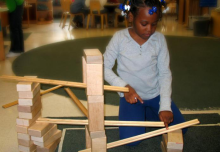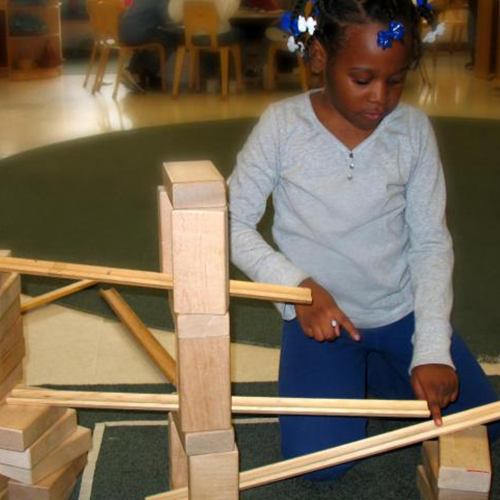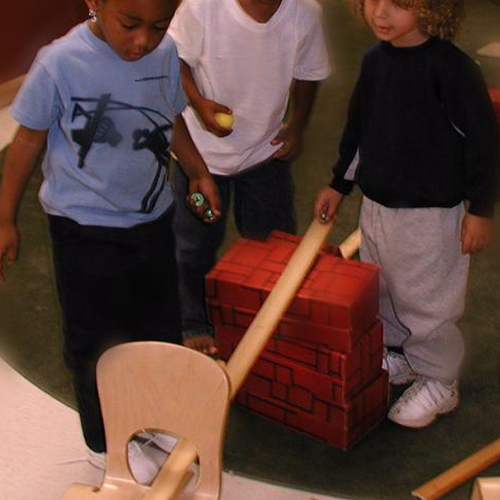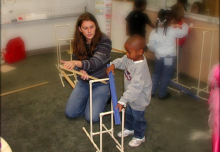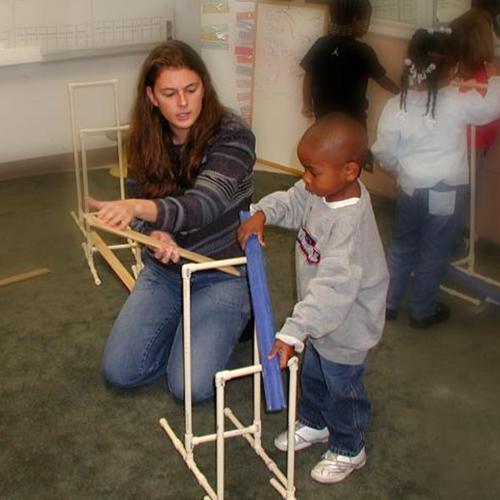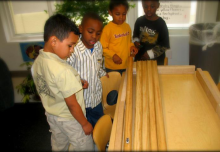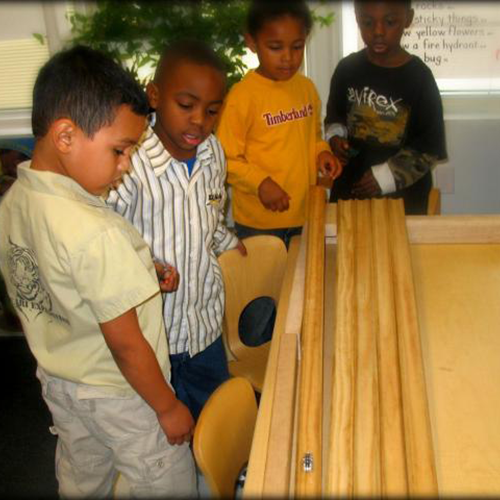Ramps and Pathways Media
Cause and Effect
Two boys building a ramp to make a marble roll through several different inclines.
Collaboration
This group of second-graders works collaboratively to create a ramp structure of their own design. They discuss their ideas and collectively make decisions concerning their goal as well as specific design features that affect the ramp system’s function and purpose. At times, they disagree about how to fix certain problems, but they are still able to work together as a team without conflict. Ramps and Pathways activities provide children with numerous opportunities to cooperate, problem solve, consider multiple perspectives, negotiate, and communicate, all valued skills in today’s workforce.
Communicating Effectively
Two preschoolers are just getting started in the ramps center. One child has created a ramp with two tracks, placing the second track on top of the first. She does not realize that this creates an obstacle in the pathway. The boy tries the ramp and notices the problem right away. He is able to articulate to her what the problem is and demonstrates how to solve it.
Fine Motor & Spatial Reasoning
A four-year-old boy builds a ramp during center time. As he builds, he very carefully manipulates the various portions of the structure, meticulously aligning the sections of the pathway and placing the blocks where he feels they are needed. Another boy joins the activity. They both work in a small space shared with other children building nearby. In addition to fostering fine motor development, Ramps and Pathways provide children opportunities for spatial reasoning as they build in close proximity to one another.
Newton's First Law
This first-grader constructs a ramp with one 90 degree corner. She expects the marble to turn the corner, but quickly discovers that the marble continues to move in a straight line. She places a block at the intersection of the tracks to make the marble change directions. This experience provides an opportunity for practical application of Newton’s First Law.
Problem Solving & Persistence
This first grader is trying to get a marble to travel down a steep incline onto a flat track and then turn a corner. Repeated opportunities for testing and observation lead him to make numerous adjustments to his structure. He finally notices the problem as he removes the extraneous pathway and moves the incline over to the longer pathway. He lowers the point of release until he gets the marble to successfully turn the corner. He persists in solving the problem without appearing frustrated. Experiences with Ramps and Pathways fully engage children’s interest and determination to succeed.
Questions to Encourage Reflection
A first grader has built a ramp with a somewhat steep starting incline and two corners. His teacher observes him and begins to ask him questions to understand what he is thinking about. Her questions encourage reflection on his actions as well as drawing his attention to the problem. She does not tell him how to solve the problem but asks him increasingly more specific questions to help him identify what he should do to solve his problem.
Ramps & Pathways: Young Engineers
Children in a first-grade classroom experimenting with Ramps and Pathways.


